History
Mineralogical Museum of Abitibi-Témiscamingue (Malartic)
In 1972, imagined by the Industrial Commission of Malartic, reinforced by original ideas from Mr. Paul Dorion, and supported by numerous volunteers, a mining museum is born in an ancient protestant church. We exhibited, in this mining museum, objects related to the mines. To better represent the reality of the miners, volunteers transformed the basement of the building into an experience simulating a descent in an underground mine.
In 1979, a new museum is built on the emplacement of the old one. Major construction works are made. The museum gets its accreditation from the Ministry of Cultural Affairs et now bears the name of Regional Mining & Arts Museum of Malartic. The institution had a double mandate to inform the public on the reality of the regional mines and to present exhibitions based on visual and artisanal art unique to the region.
In 1984, the museum, in association with the mining company Minerais Lac, transforms its exhibition by putting emphasis on the process of the transformation of the minerals. We explained here the various steps that a mineral has to go through in order to become a gold brick.
In 1989, the museum now presents a new exhibition following major renovations. The presentation is now separated in three exhibition rooms. In the first one, the visitor learns about the mineralogical diversity as well as the various steps of the transformation of the minerals. In the second one, an impressive international collection now captivates the visitors. Finally, untouched since 1972, the third room shows the simulated underground descent.
In 1996, after a bit more than 30 years of operations, and following the opening of the Cité de l’Or, the decision is taken to give a breath of fresh air to the establishment. The Mineralogical Museum of Abitibi-Témiscamingue now preserved and highlighted the mineral and geological inheritance by presenting a regional and an international mineral collection.
In 2006, The Association minière du Québec (Quebec Mining Association) was happy to announce that it was gifting the entirety of the Du Roc au Métal exhibition to the Mineralogical Museum of Abitibi-Témiscamingue in Malartic. This nomad exhibit was developed with the collaboration of the Museum of Civilisation and numerous partners. The Quebec Mining Association wanted to permanently gift this exhibition to a regional museum. They proceeded to analyse the potential locations for it and its administrative council decided to select The Mineralogical Museum of Abitibi-Témiscamingue as its recipient. For the Mineralogical Museum, this important decision let the institution enhance the prestige of its collections by it being integrated to its permanent exhibit by the beginning of 2006. Du Roc au Métal perfectly fitted with the mission and the mandate showing the importance of the mineral resources and was an excellent tool to correctly inform the public on the role of the mining activities in the province.
In 2008, realisation of an important development project: a municipal library and a new exhibition room. It represented an investment of more than 2M$. After many months of construction and waiting, on October 24th, 2008, the city of Malartic and the members of the administrative council of the Museum were proud to officially open the municipal library and the new exhibition room. The Museum, with the accord of the municipal council, had erected a new library coupled with a new room for exhibitions. The library was now more spacious, giving better access to everybody, had a reading zone made for children, an internet service, and a greater number of books to increase the general quality of life of its users. For the Museum itself, the construction of a new room of 254 square meters equipped with facilities to house various exhibitions now answered an essential need of the collectivity. It also allowed the Museum to consolidate itself being a region-wide establishment. The construction of such a building, communicating with the museum, included a lot of advantages and cemented itself in the current tendency, regionally and nationally, to situate cultural elements and equipment in the same building in order to maximise the exploitation of these elements, reduce operation costs, and offer better services to visitors and clients.
In 2011, visits to the mine. The Mineralogical Museum, in collaboration with the Canadian Malartic Mine, announced that they would offer, for the summer period of 2011, the possibility to visit the installations of the biggest active open pit gold mine in Canada. Visiting this new generation mine also meant to experience the daily lives of the workers and to better understand the technological development of the industry. The Museum was named winner of the regional price for the best touristic attraction in 2012 thanks to the mine tours.
In 2012, rearrangement of a part of the permanent exhibition. An investment of 289 000$ was made. The project consisted in upgrading the general concept of the exhibition in two of the four rooms, both situated on the main level, by adapting them to new concepts linked to today’s realities.
The new scenario presented the following themes:
- Presentation of all the mining projects in Abitibi-Témiscamingue.
- Identification of mines currently in production, in development stages, as well as enhancement projects.
- Elaboration of better visuals for our collections of minerals.
- Computer station with a screen to create a modified image of the visitors on different backgrounds enabling them to send virtual postcards.
- Creation of a functional earthquake simulator.
In the summer of 2014, it as decided to continue the already started work and to rejuvenate another important part of the permanent exhibition by rearranging several sections of rooms number 3 and 4. The museum developed themes and presented novelties in accord with its mission and linked to the existing exhibition. This project amounted to 215 000$.
The new exhibition presented the following elements:
- Projection room on the Giga History. Presentation of information on a chronological scale and recounting of geological events that made the Earth what it is today and links to the region of Abitibi-Témiscamingue.
- Geological samples field; updated & upgraded. This part of the exhibit made you discover the three main types of rock formations and their relevance to today’s minerals.
- Presentation of the main quarries in the province of Quebec and their produced minerals as well as the main uses of them.
- Presentation on rare earths: Their use and the resources that we try to explore currently in the province of Quebec.
- Construction of a passage; a walkable path showing minerals that have luminous properties such as phosphorescence and fluorescence.
- Urban mine: This activity presents a game in the museum while a computer, a monitor, a cellphone, and a laptop are broken apart and are animated by the visitor to discover the minerals used in their fabrications.
In 2017, rearrangement of the permanent exhibition. June 8th, 2017, the Minister of Culture and Communications of Québec, Mr. Luc Fortin announced that the museum would get a financial boon of 82 000 $ to cover for a part of the fees related to the realisation of the rearrangement of a part of the permanent exhibition. Indeed, only a single part of the exhibition was not renovated in the last 10 years. Covering 400 square feet, it transitions between two sections since it is situated at the beginning of room number 4: The Rock in All its States. It was part of an ancient exhibition realised back then by the Mining Association of Quebec in collaboration with the Museum of Civilisation. It was decided to renew it. The arrangement of these spaces is somewhat limited, but it does not stop them from being grand, spectacular, and at the pinnacle of technology. It was proposed to replace the section called ¨Du Roc au Métal¨ by a new one based on the different steps of the mining process.
In this new concept, the mining cycle is presented with the following themes:
- The exploration
- The lay-out
- The exploitation
- The closing and restoration of sites
This presentation is realised in the form of schematics, object presentations, videos, photos, and other graphical support. This new setup lets the Museum present 50 new pieces from the collections of the Museum including minerals, mining equipment, photos, and laboratory devices. The exhibition shows the importance of our mining resources, from prospection to transformation, going through extraction. It also shows the mineral resources and their use with the help of a mostly interactive approach. The project was completed in 2019.
In 2019, renewal of the partnership with the Canadian Malartic Mine. For the 9th straight year, following a renewal of the partnership with the mine, the museum continued to offer the unique opportunity to visit an active gold mine.
For 2022, at the eve of its 50th anniversary, the Museum is currently working on new projects to continue assuring its development.







